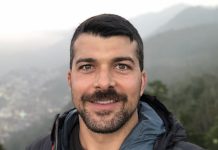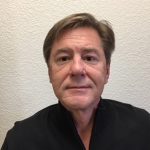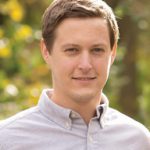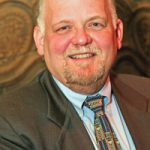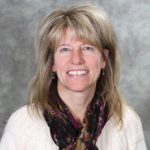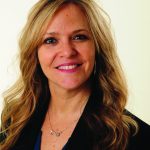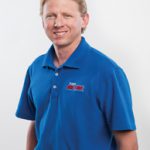Give us some background history on Iowa State University’s wind energy programs.
The wind-energy science, engineering, and policy (WESEP) Ph.D. degree program began in 2012 in recognition that wind energy is the most economically attractive way to produce bulk quantities of greenhouse gas-free electric energy and that additional research is needed to further increase the percentage of electricity generated from wind energy and simultaneously reduce its cost.
The program began as a result of a $3.1 million integrative graduate education and research traineeship (IGERT) award the university won in 2011 from the United States National Science Foundation (NSF), which supports the development of a new multidisciplinary, multi-institutional graduate training program of education and research in WESEP at Iowa State (ISU) in collaboration with the University of Puerto Rico – Mayagüez. The purpose of this program is to meet the challenges of educating Ph.D. scientists and engineers in the U.S. with the interdisciplinary background, deep knowledge in a chosen discipline, and the technical, professional, and personal skills needed for the career demands of the future.
ISU also has an undergraduate minor program in wind energy with a number of courses available.
What sparked your interest in this industry?
I was an electric transmission planning engineer at Pacific Gas & Electric Company in San Francisco from 1985 to 1990. During my computer studies of the Western power grid, I modeled the Altamont Pass wind farm on the eastern side of the San Francisco Bay that was new at the time and the first in the nation. I became interested then because it was a novel technology, not because I thought it would ever play a significant role in supplying our nation’s energy, which was a perspective I maintained until MidAmerican Energy built its first large-scale Iowa wind farm in 2004. As a professor of electrical engineering at ISU, I began to study wind energy seriously. Very soon thereafter, I came to the conclusion that wind energy represented the nation’s most promising electric energy generating technology and initiated research activities in this area along with several colleagues in the department of electrical and computer engineering. This work began to expand in 2008 when the ISU College of Engineering (COE) organized a college-wide symposium on wind energy. Various people from multiple departments began collaborating, and when those efforts converged in 2011, we won the NSF IGERT award. One year later, we won a $500,000 award from the ISU COE to establish the wind-energy initiative. Additional funding for wind-energy research came when a collaborative effort among the state of Iowa’s Board of Regents’ universities (ISU, the University of Iowa, and Northern Iowa University) won an experimental program to stimulate competitive research (EPSCOR) award from the NSF. The university organized a second symposium in September 2015 to increase collaboration with the wind-energy industry.
Why does the university believe pursuing careers in wind energy are beneficial to its students? What is its view on the state of the wind-energy industry here in the U.S.?
The wind-energy industry is still very new with a great deal of room for technological innovations. Therefore, there is a great need for researchers who are trained in this field. The wind industry is also growing rapidly with wind energy comprising either the most or second-most added electric generating capacity in the U.S. every year since 2005, so the job market for engineers at both the undergraduate and graduate levels is very good.
The university believes that wind energy will continue to grow with Iowa as one of the leading states in the industry. With ISU’s faculty expertise, the university is uniquely positioned to facilitate that growth by supplying both technological innovations and the needed labor force.
Tell us about the instructional philosophy behind the university’s wind-energy initiative.
Wind energy is a highly interdisciplinary area of work, requiring knowledge and expertise in meteorology, statistics, and policy development together with almost all of the engineering disciplines including aerospace, mechanical, electrical, computer, industrial, civil, and materials science. This leads to a highly interdisciplinary approach to education where faculty from multiple departments ‘team-teach’ most of the courses. Students are trained to efficiently master the basics of each discipline and then identify how those basics are applied to WESEP. This inherent interdisciplinary training results in graduates who are comfortable and capable working across disciplinary boundaries.
What kinds of opportunities can students take advantage of beyond traditional classroom instruction at Iowa State?
ISU sponsors an NSF-supported research experience for undergraduates every summer, which is a 10-week program that chooses 10 to 15 undergraduates from applicants coming from universities around the nation. Each of these students receives $5,000 plus lodging to participate and is expected to complete a research project while in the program.
We also offer a weekly seminar series that WESEP Ph.D. students must enroll in every semester and that faculty and other students are welcome to attend. The most important function of this seminar is to expose students to a broad array of R&D and industry issues. Speakers from universities, industry, government agencies, and national labs are recruited from all over the U.S. to present. In addition, students are exposed to training in professional ethics, communication skills, and research methods.
We have four hardware laboratories on campus related to wind: the Wind Energy Manufacturing Laboratory run by the industrial and manufacturing systems engineering department, the Wind Simulation and Testing Laboratory run by the aerospace engineering department, the Wind Energy Systems Laboratory run by the electrical and computer engineering department, and the Structural Engineering Research Lab run by the civil engineering department. Some of the university’s related research centers actively participating in wind-energy research include the Electric Power Research Center and the Center for Nondestructive Evaluation. These laboratories are also utilized in undergraduate education.
In addition, the WESEP Ph.D. program provides an international experience where a student identifies a university or research organization in another country to visit for two to six months to establish collaborative research activities.
Finally, ISU has established the Wind Energy Student Organization (WESO) that sponsors lectures, organizes educational visits to local K-12 schools, and supports various wind-energy-related projects on campus. This shows that WESEP students are motivated to inspire the next generation of wind engineers, and they have invested enough in the program to engage in outside collaborative projects such as the 1-kW wind turbine project.
Tell us about the career opportunities available to students after graduation.
Employment opportunities for students graduating with training in wind energy can be found at the wind-turbine manufacturers (e.g., Siemens, GE, Iberdrola, and Vestas), wind-farm developers (e.g., MidAmerican Energy, NextEra, Horizon, etc.), grid operators (e.g., Mid-Continent Independent System Operator, PJM, California Independent System Operator, New York ISO, ISO-New England, Southwest Power Pool, Bonneville Power Administration, etc.), electric utility companies (e.g., Southern California Edison, Pacific Gas & Electric Company, etc.), national laboratories (e.g., Ames Lab, NREL, PNNL, LLNL, Argonne, etc.), government agencies (the National Weather Service and the National Oceanic and Atmospheric Administration, etc.), installation/repair/O&M (Bechtel, ABB, etc.), consultancy/engineering (e.g., Vaisala, AWS Truepower, Burns & McDonnell, etc.), and component manufacturers (TPI Composites, Trinity Towers, Schneider Electric, etc.).
We believe our WESEP graduates will not only be in high demand from the growing wind-energy industry, but they will also be in demand from other industries that place high value on students with interdisciplinary training, including any organization that is involved in production and delivery of energy of any form.
Because the first WESEP Ph.D. cohort began in Fall 2012, we have had only one student graduate at this point. That student is employed with NextEra, the largest owner of U.S. wind-power capacity, in Juno Beach, Florida. NextEra is the largest owner of wind-power capacity in the nation. There are presently 20 students in the program.
![]() (515) 294-4844
(515) 294-4844
![]() www.iastate.edu
www.iastate.edu
![]() home.eng.iastate.edu/~jdm
home.eng.iastate.edu/~jdm
![]() /IowaStateU
/IowaStateU

















